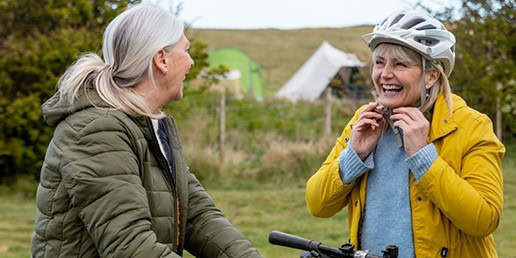Wellbeing and Disease Prevention
Overview Wellbeing and Disease Prevention
A SUMMARY
living longer with a better quality of life
Some may consider this the most important section of this website as it offers the tools to really improve your health over both the short and long term. The vision of wellbeing and disease prevention held by many medical figureheads is covered in the Live longer better campaign which includes reference to the successful blue zones across the world.
Mental, social and physical wellbeing
Mental, social and physical wellbeing are the three linchpins of good health. In each of these key areas we consider how on your own or with local support you can improve your wellbeing.
Physical wellbeing includes local support in the areas of exercise, healthy weight, healthy eating, and sleep. Local help is available for risk factors such as smoking and alcohol and drugs. Lifestyle changes considers how to make changes permanent.
REDUCING YOUR RISK OF common MEDICAL CONDITIONS AND ACCIDENTS
Reducing your risk of many conditions or events including cancer, dementia, strokes, heart attacks, diabetes, COPD, falls, accidents, and the risks to your mental health are all well covered and can give you extra motivation to make changes.
preventing disease
Taking advantage of the opportunities available from Vaccinations, Screening (including the NHS Health Check) and travel health can provide long term support for your health.
Picking up the SYMPTOMS AND SIGNS of serious illness earlier
Knowing when symptoms and signs may be more serious can save lives and improve outcomes as with spotting sepsis, spotting a sick child and spotting cancer. Taking a safety netting approach to your health using the information on this website can help you understand when you should see a GP and if more serious attend A&E.
Population health management
Population Health is a new approach to improving the health of a local area and considers the broader determinants of good health beyond just medical conditions and then considers changes at scale. More information on this is provided under population health management as it may become more important for health in your local community.
Improving health and reducing health inequalities
The importance of wellbeing and disease prevention is shown when considering the help for reducing health inequalities.
POPULAR LINKS
Some of the more commonly accessed pages for this section include:
UNDERSTANDING A TYPICAL PAGE LAYOUT
Some links on this page have been colour coded to make it easier to find the information you need:
DIVIDING INFORMATION INTO different colours (CATEGORIES)
Every GP will have been trained to try and pitch any information they give patients at the level the patient wants. The difficulty even for the same person is there can be times when you just want a simple overview of a condition, other times you may want more detailed information (but still designed for patients) and occasionally you may want to know why a clinician (such as a GP) is advising an option to support you and what is the actual evidence for such an option (clinical level information written for clinicians).
The difficulty for websites such as NHS choices, Patient info and NICE (which all have excellent information) is that their articles have to be written with one type of audience in mind and have a consistent style. As a signposting site we can get around this and combine their different styles allowing you to choose the level of information you want.
We have colour coded information and you will see a key at the top of each page where this is relevant to the page, dividing information into 3 categories:
- Quick read
- In depth
- Clinical level
QUICK READ
This information is usually from sources such as NHS choices, and national charities which support a specific condition, age group or other important group (e.g., veterans). The articles are usually short (usually taking less than 1 minute to read) and the language is patient orientated.
IN DEPTH
This information is usually from sources such as Patient info, Gov UK and sometimes from national charities and from NICE (National Institute of Clinical Excellence). This information is patient orientated but is much more detailed (often taking more than 2 minutes to read any article).
CLINICAL LEVEL
This information is usually from sources such as NICE (National Institute of Clinical Excellence) but also there are some articles from Patient info and Gov.UK. This information is intended for clinicians in GP practices and hospitals. It is included because some patients find it beneficial to have much more clinically orientated information, so they can understand the medical evidence for a clinician suggesting a specific option.
FREQUENTLY ASKED QUESTIONs
An average GP will see 1000s of patients every year. There are some questions which get asked by patients more often and the frequently asked question section on many of the website pages tries to capture some of those more commonly asked questions.
WHAT IS A SELF-REFERRAL?
As patient info suggest, these are normally free “services you can access without needing an appointment with your GP”. These services include NHS services but also importantly services from your local council and some charities.
From Patient info
Self-referral Self-referral | Patient
The reason self-referral services are so important is that many of them are excellent and are actually where your GP will direct to you if you were to see your GP. However, you can go directly to these services without seeing your GP.
LOCAL SUPPORT
Local support has been put at the top of each page (if available). Unfortunately, though many excellent local services are available, at present they are often invisible to the general public as it can be difficult to pick them out with the sheer volume of information available and also though sites such as NHS choices, patient info and NICE (National Institute of Clinical Excellence) are very good they are not equipped to give detailed information on local services.
NATIONAL SUPPORT
Information on national support (if available) appears after information on local support on this website. This includes many telephone helplines, some chat and email communication often from national charities which offer an excellent service. This information is available to varying degrees on NHS choices, Patient info and NICE though it tends to be at the end of articles or buried within an article. As a signposting site we are able to give this information greater prominence as we believe these helplines can provide significant support for patients.




